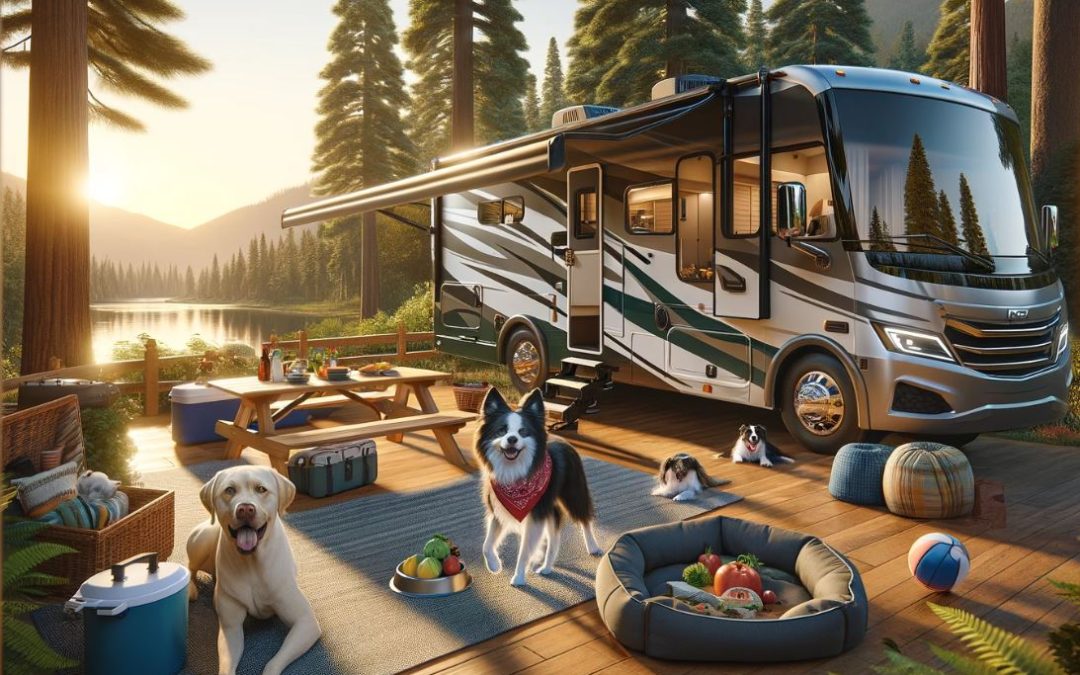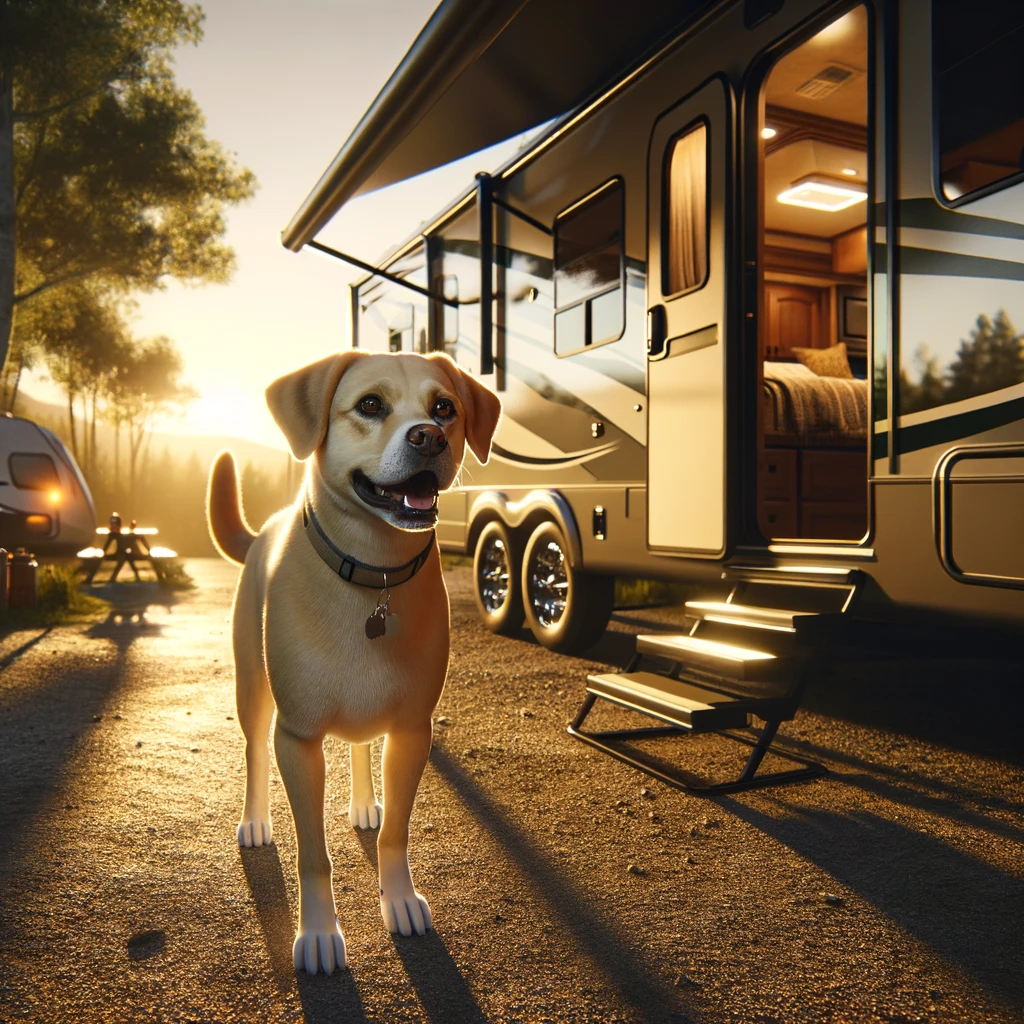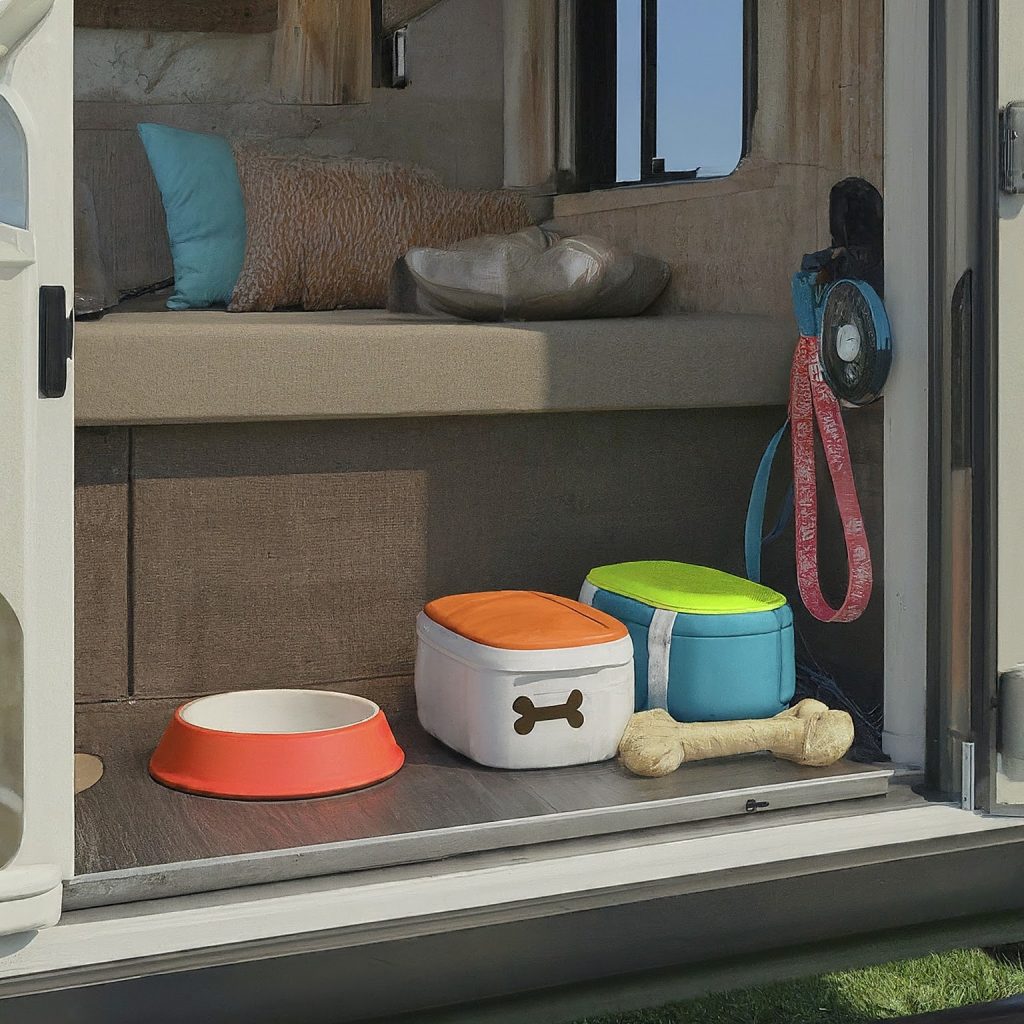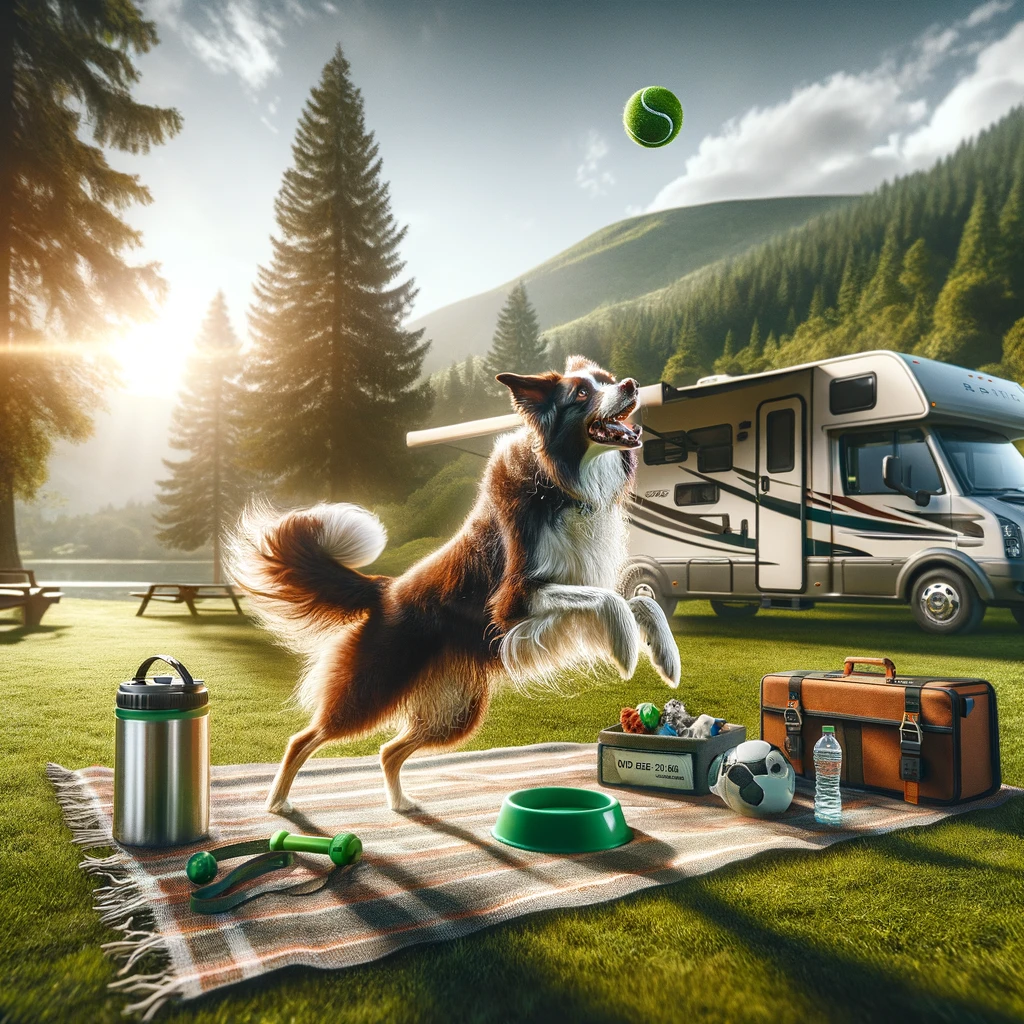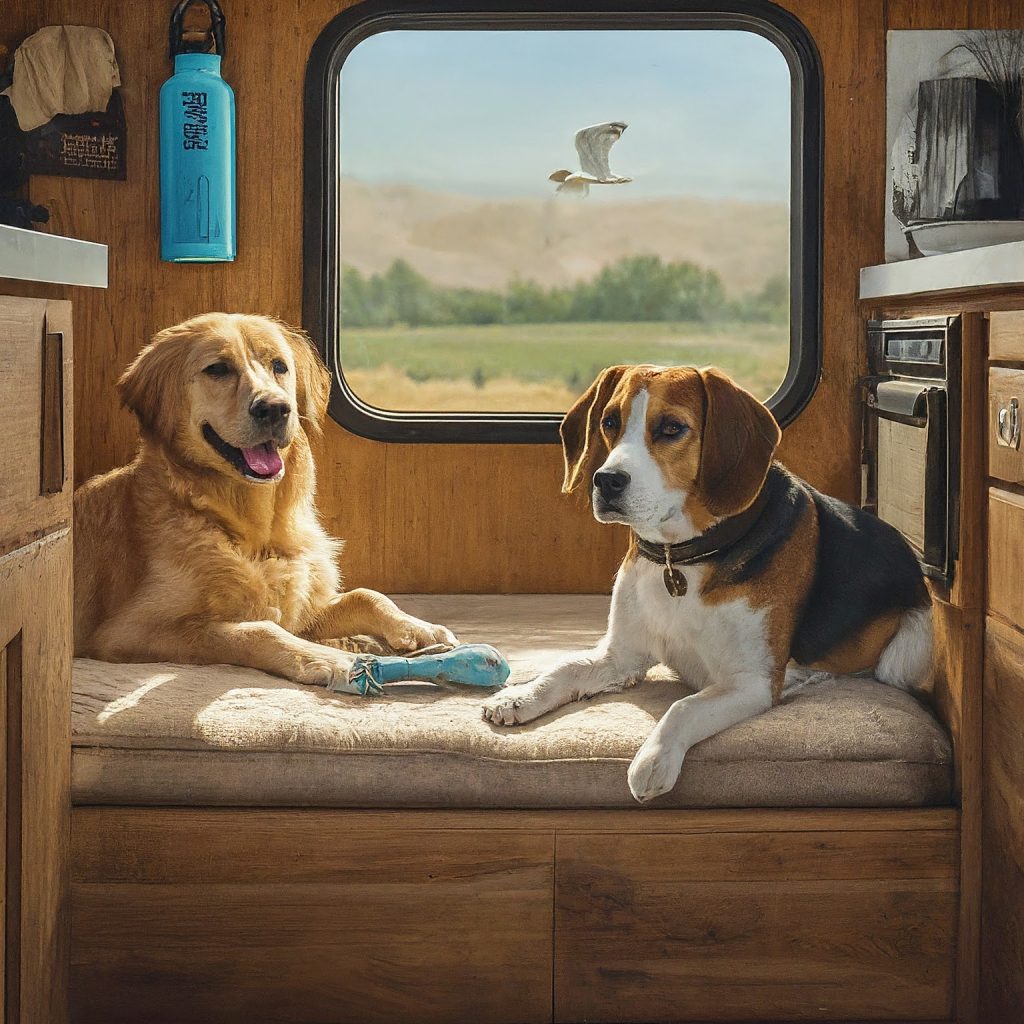Exploring the Joys of RVing with Dogs
The open road stretches before you, the wind whispers through the pines, and beside you sits your furry copilot, tail wagging in anticipation. RVing with your dog has become an increasingly popular way to explore the country, offering adventure, bonding, and unforgettable memories.
This guide equips you with the knowledge and resources to ensure a safe and joyful journey for both you and your canine companion. Whether you’re seasoned RVers or embarking on your first furry road trip, we’ll cover essential aspects like choosing the right RV, preparing your dog for the adventure, ensuring their comfort on the road, and finding dog-friendly destinations.
So, buckle up and get ready to explore the magic of RVing with your four-legged best friend!
Charting Your Course: Choosing the Perfect RV for Your Pup
Before embarking on your epic pup-tastic adventure, finding the ideal RV is crucial. Here’s where size, dog-friendly features, and budget play a pawsome role:
Sizing Up Your Options:
- Cozy Compact: Ideal for solo travelers or small pups, Class B vans offer nimble maneuverability and easy parking. Consider the Roadtrek Simplicity or Winnebago Solis.
- Spacious Spread: Traveling with multiple dogs or larger breeds? Class C motorhomes like the Jayco Redhawk or Entegra Journey provide ample space for both humans and furry explorers.
- Luxurious Livin’: Class A behemoths like the Newmar Dutch Star or Thor Palazzo offer the ultimate in comfort and space, complete with features like dedicated pet areas and outdoor dog showers.
Dog-Gone Delightful Features:
- Easy Clean-Up: Opt for durable, stain-resistant flooring like vinyl or linoleum to handle muddy paws and adventurous accidents.
- Safety First: Secure tie-downs for crates or harnesses, fire extinguishers, and carbon monoxide detectors ensure peace of mind.
- Creature Comforts: Look for features like built-in pet feeders, dog-washing stations, and designated sleeping areas to create a home away from home for your furry friend.
Budgeting for Your Woof-derful Trip:
- New vs. Used: Decide if a brand-new RV with the latest features fits your budget, or if a well-maintained used model offers cost savings.
- Rental vs. Purchase: Consider renting an RV for shorter trips to test the waters before committing to a purchase.
- Hidden Costs: Factor in fuel, campground fees, pet-related expenses, and potential maintenance costs when budgeting.
Remember: Research and compare different RV models to find the perfect fit for your pup’s needs and your travel style. Don’t forget to take your furry friend along for a test “paw”-duction to ensure their comfort and approval!
Prepping Your Pup for the Road: Building Confidence & Comfort
The key to a stress-free journey starts with a well-prepared pup. Here’s how to ensure your furry co-pilot embarks on the adventure with wagging confidence:
Introducing Your RV:
- Start slow: Let your dog explore the RV at their own pace. Use treats and positive reinforcement to create positive associations.
- Make it familiar: Bring their favorite bed, toys, and blankets to create a sense of comfort in their new temporary home.
- Practice makes perfect: Take short “test drives” around the block to get your dog used to the movement and sounds of the RV.
Essential Routines On-the-Go:
- Practice crate training: If using a crate, ensure your dog feels comfortable and secure inside. Train them to spend time there willingly.
- Potty training reinforcement: Maintain their regular potty schedule and make frequent stops during travel. Reward successes generously.
- Feeding on the move: Stick to their usual feeding routine to avoid digestive upset. Consider smaller meals more frequently if traveling long distances.
Health & Documentation:
- Veterinary Checkup: Schedule a pre-trip visit to ensure your dog’s vaccinations are up-to-date and discuss any travel medications needed.
- Identification is key: Ensure your dog wears a collar with current ID tags and consider microchipping them for added security.
- Travel documents: Research and obtain any necessary permits or health certificates required for specific destinations.
Remember: Patience and positive reinforcement are key! Start preparation early, address any anxieties, and create a positive experience for your dog. Their happy spirit will make the journey even more enjoyable for everyone.
Building a Safe & Comfortable Haven for Your Pup: Packing & Preparing the RV
While “Packing Essentials” is important, let’s focus on creating a seamless flow and avoid redundancy. Here’s a combined section that addresses both packing and creating a comfortable space within the RV:
Transforming Your RV into a Pup Paradise:
Essential Gear:
- Packing for Safety & Hygiene: Ensure responsible pet ownership with leashes, harnesses, waste bags, and a first-aid kit tailored to your dog’s needs. Pack cleaning supplies (enzymatic cleaners, odor neutralizers) for accidents.
- Food & Water Essentials: Pack familiar food, bowls, and ensure easy access to fresh water throughout the journey. Consider portable water dispensers for on-the-go convenience.
- Cozy Comforts: Create a designated sleeping area with a comfy bed, crate, or familiar blankets. Pack their favorite toys for entertainment and mental stimulation.
Creating a Canine Corner:
- Dedicated Sleep Station: Utilize a crate, designated bed, or a comfortable spot with familiar items for peaceful snoozing.
- Feeding & Hydration Hub: Set up a designated area for their bowls, ensuring easy access to fresh water throughout the journey.
- Portable Potty Solutions: Consider options like pee pads or portable potties for situations where immediate outdoor access isn’t possible.
Keeping Your Pup Entertained:
- Variety is Key: Pack a variety of chew toys, puzzle toys, and interactive toys to prevent boredom and keep them mentally stimulated.
- Travel Games & Treats: Hide treats or use puzzle toys to provide mental stimulation during long stretches.
- Sniff & Seek Adventures: Allow controlled exploration at dog-friendly rest stops and destinations using leashes and harnesses.
Remember: Tailor your packing and preparations to your dog’s individual needs and preferences. Don’t forget their medications, favorite treats, and any comfort items that bring them joy!
Unleashing Adventure: Exploring Dog-Friendly Destinations
Now that your RV is a pup paradise and your furry co-pilot is prepped for the journey, it’s time to chart your course! Here’s how to find pawsome destinations that welcome both you and your canine companion:
Unlocking the Perfect Pit Stop:
- Research is key: Utilize online resources like BringFido, Rover, and Kampgrounds of America to filter campgrounds and attractions by pet-friendly policies and amenities.
- Amenities that wag your tail: Look for campgrounds with designated dog parks, walking trails, pet-washing stations, and even dog-friendly cafes.
- Beyond the campground: Research dog-friendly beaches, hiking trails, national parks, and local attractions that welcome furry explorers. Remember leash laws and responsible pet ownership.
Pawsome Places Across the US:
- Coastal Delights: Unleash the joy of beach adventures in California’s Huntington Dog Beach, Florida’s Jupiter Off-Leash Dog Beach, or North Carolina’s Crystal Coast beaches.
- Mountain Majesty: Explore the dog-friendly trails of Rocky Mountain National Park in Colorado, Mount Rainier National Park in Washington, or Shenandoah National Park in Virginia.
- Urban Oasis: Discover hidden gems like Central Park’s unleashed dog runs in New York City, Millennium Park’s dog park in Chicago, or the many dog-friendly cafes and shops in San Francisco.
Remember: This is just a starting point! Research destinations specific to your travel plans and interests. Consider your dog’s breed, energy level, and preferences when choosing activities and locations.
Tail-Wagging Tips & Resources for a Pawsome Journey
Now that you’re equipped with the essentials, let’s explore some bonus tips and resources for a truly unforgettable RVing adventure with your dog:
Conquering Canine Worries:
- Recognizing Separation Anxiety: Watch for signs like pacing, whining, or destructive behavior when left alone. Consult your veterinarian or a certified animal behaviorist for personalized guidance.
- Training for Tranquility: Gradually acclimate your dog to spending time alone in the RV through positive reinforcement and desensitization techniques. Consider crate training for comfort and security.
- Calming Aids: Consult your veterinarian about natural calming aids like calming chews or pheromone diffusers as additional support.
Building a Pack on the Road:
- Connect with Fellow Dog-Loving RVers: Online forums, social media groups, and RVing clubs dedicated to pet-friendly travel offer a wealth of information, support, and potential travel buddies.
- Join Dog-Friendly Events & Gatherings: Many campgrounds and destinations host dog-friendly events like hikes, meet-and-greets, and agility courses, fostering socialization and fun.
A World of Resources:
- American Kennel Club (AKC): https://www.akc.org/ (Traveling with Dogs, Pet-Friendly Hotels & Destinations)
- BringFido: https://www.bringfido.com/ (Dog-friendly campgrounds, beaches, restaurants, & more)
- Rover: https://www.rover.com/ (Pet sitters, walkers, & dog boarding)
- Kampgrounds of America (KOA): https://koa.com/ (Pet-friendly campgrounds across the US & Canada)
Remember: Always research specific regulations and pet policies before visiting any destination. Pack responsibly, prioritize your dog’s safety and comfort, and most importantly, create lasting memories filled with wags and wonder!
Unleashing a Lifetime of Adventures with Your Best Friend
As the sun sets on this guide, let the spirit of adventure rise! RVing with your dog isn’t just a trip; it’s the start of a unique bond forged on open roads, shared experiences, and tail-wagging joy. You’ve got the tools, the tips, and the inspiration – now it’s time to chart your course and embark on your very own pawsome adventure.
Remember, the journey is just as important as the destination. Soak in the wind in your fur, the sun on your noses, and the laughter that fills the RV. Capture moments big and small, witness breathtaking landscapes together, and create memories that will last a lifetime. So, buckle up, furry copilot, and get ready to unleash a world of adventure!
Don’t forget to share your journey! Use the hashtag #WaggingRVAdventures to connect with other dog-loving travelers, showcase your experiences, and inspire others to hit the road with their own furry companions.

